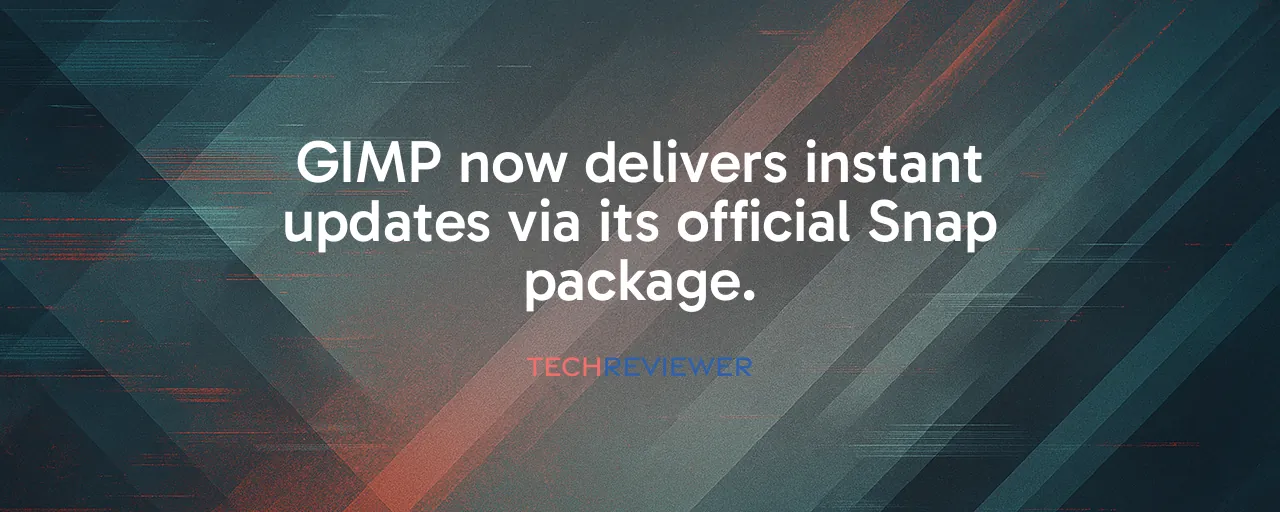A New Era for GIMP on Linux
The GNU Image Manipulation Program, better known as GIMP, has long been a go-to for Linux users crafting stunning visuals without spending a dime. With its recent shift to an official Snap package, announced on October 19, 2025, GIMP is making waves again. This move hands control of Snap distribution back to the GIMP team, replacing the community-driven Snapcrafters project. By integrating package builds into its Continuous Integration pipeline, GIMP ensures users get new releases the moment they drop, no matter their Linux distribution. For a program that's been a staple since 1995, this feels like a fresh leap forward.
Why does this matter? Linux users often wrestle with fragmented software distribution, waiting weeks for updates as maintainers adapt packages for specific systems like Ubuntu or Fedora. GIMP's Snap package sidesteps this, delivering a consistent experience across platforms. With over 2.4 million visits to gimp.org in May 2025 alone, it's clear the demand is there. This change also builds on GIMP's multi-format strategy, joining Flatpak and MSIX to make the software accessible to everyone, from hobbyists to enterprise teams.
Plugins That Play Nice With Security
One of the standout features of GIMP's Snap package is the new gimp-plugins interface, a clever solution for balancing flexibility with security. Linux Snap packages are known for strict confinement, using tools like AppArmor and seccomp to lock down apps and protect systems. This can make adding plugins tricky, as they often need broader access. GIMP's developers, including Will French who built the interface, found a way to let plugins like GMIC and OpenVINO run smoothly without breaking the security sandbox.
Take GMIC, for example. With over 640 filters and effects, it's a powerhouse for creative editing. Now packaged as a separate Snap, it integrates seamlessly with GIMP, letting users add complex effects without compromising system safety. Similarly, Intel's OpenVINO AI plugins bring cutting-edge features like Stable Diffusion image generation and super-resolution upscaling. These plugins show how GIMP's Snap package opens doors for developers to expand functionality while keeping security tight, a win for users who want both power and peace of mind.
Real-World Wins and Trade-Offs
GIMP's Snap package is already proving its worth in practical settings. Some educational institutions with mixed Linux environments have reported that the Snap package simplifies deployment, allowing administrators to roll out updates across different systems simultaneously, saving hours of manual work. This mirrors broader trends, as GIMP's 8.39% market share in image editing reflects its role in diverse environments, from startups to schools. The Snap architecture's automatic rollback feature means that if an update causes issues, users can revert to a previous stable version without a headache.
But it's not all smooth sailing. Snap packages bundle all dependencies, which can eat up disk space compared to traditional packages that share system libraries. Some users notice slower startup times, though this varies by system. There's also grumbling in the Linux community about Canonical's control over the Snap Store, which, despite its open-source core, relies on proprietary backend infrastructure. For instance, Linux Mint has ditched Snap support entirely, favoring Flatpak. Still, for users on Ubuntu or other Snap-friendly systems, the trade-offs often pale next to the convenience of instant updates and cross-distribution consistency.
Lessons From GIMP's Snap Journey
GIMP's transition offers valuable lessons for open-source projects eyeing universal packaging. First, automation is a game-saver. By weaving Snap builds into their CI pipeline using Docker, GIMP's team, led by Bruno, cut out manual delays. Other projects, like Audacity or OBS Studio, could follow suit, especially since Snapcrafters already maintains their packages. Second, plugin ecosystems matter. The gimp-plugins interface shows how to keep apps extensible without sacrificing security, a model that could inspire tools like Krita or Inkscape.
However, GIMP's move highlights the Linux community's ongoing tug-of-war over packaging formats. While Snap's automatic updates and security are compelling, Flatpak's traction in GNOME circles and AppImage's lightweight approach keep the debate alive. For GIMP users, the Snap package is a clear step toward accessibility, but it also underscores the need for collaboration across formats. Imagine a future where plugins work across Snap and Flatpak, reducing the workload for developers and confusion for users. GIMP's latest move might just spark that conversation.
